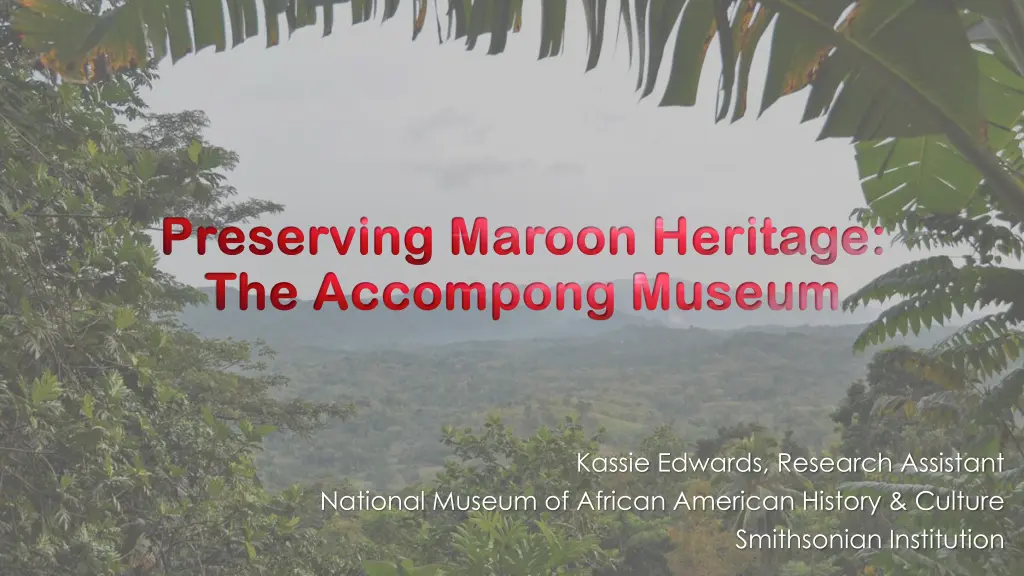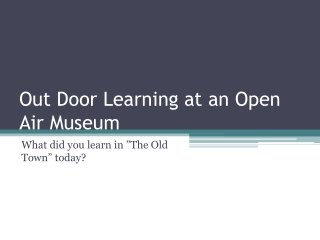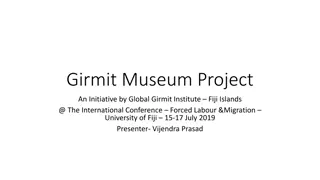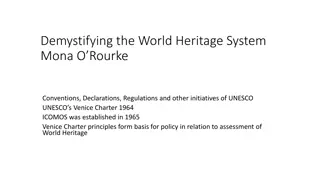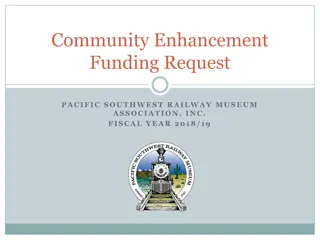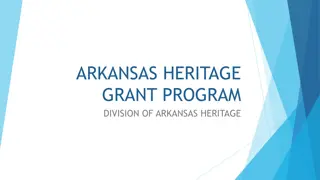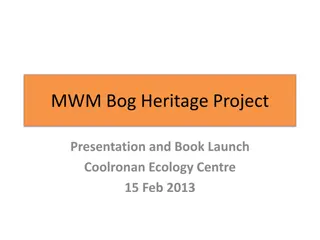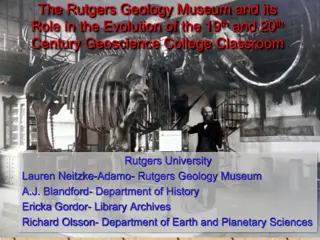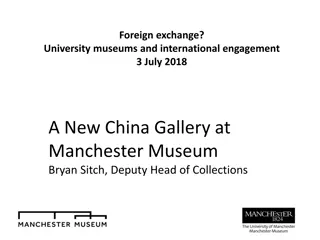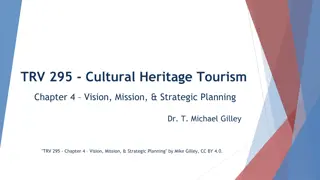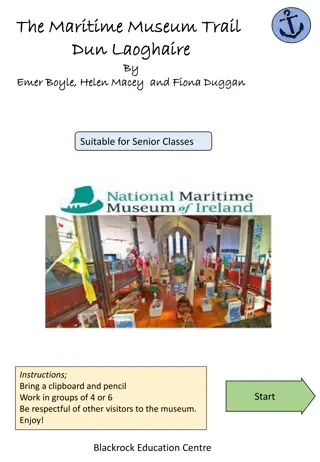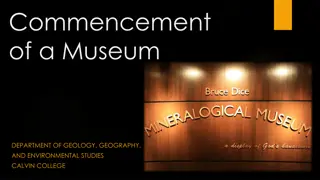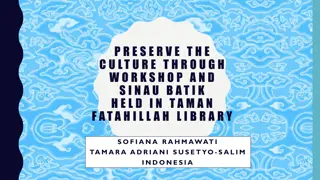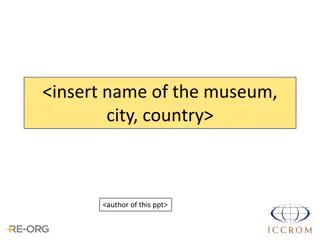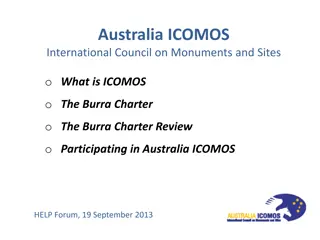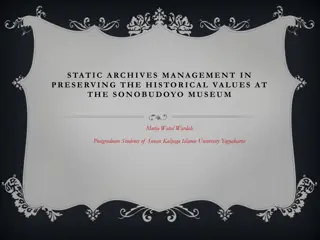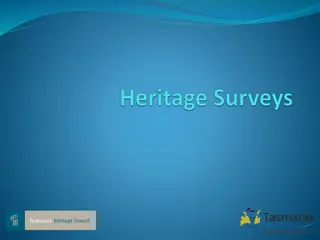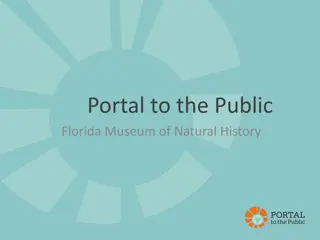Preserving Maroon Heritage at Accompong Museum
Explore the rich history of Accompong Maroons, descendants of runaway slaves who secured self-governance through treaties. Learn about the annual peace treaty celebrations on January 6th. Discover the history of Jamaica, starting from the Arawak settlement to gaining independence in 1962. Dive into the intriguing past of Jamaican Maroons, from the First Maroon War and treaties to present-day settlements and recognition. Check out the Windward and Leeward Maroons, as well as the government-recognized Maroon towns like Accompong and Moore Towne. Understand the government oversight and organizations preserving Jamaica's heritage. Engage with the legacy of resilient and self-sufficient Maroon communities.
Download Presentation

Please find below an Image/Link to download the presentation.
The content on the website is provided AS IS for your information and personal use only. It may not be sold, licensed, or shared on other websites without obtaining consent from the author.If you encounter any issues during the download, it is possible that the publisher has removed the file from their server.
You are allowed to download the files provided on this website for personal or commercial use, subject to the condition that they are used lawfully. All files are the property of their respective owners.
The content on the website is provided AS IS for your information and personal use only. It may not be sold, licensed, or shared on other websites without obtaining consent from the author.
E N D
Presentation Transcript
Preserving Maroon Heritage: Preserving Maroon Heritage: The The Accompong Accompong Museum Museum Kassie Edwards, Research Assistant National Museum of African American History & Culture Smithsonian Institution
Accompong Maroon St. Elizabeth Parish, Jamaica The Accompong Maroons are the historic descendants of runaway slaves, who waged successful wars against the British and gained quasi self- governance through a treaty negotiated by their leader Cudjoe in 1738. Every year on January 6, the community hosts peace treaty celebrations.
History of Jamaica Originally inhabited by Arawak also called Taino peoples Jamaica derives from the Taino word Xaymaca Christopher Columbus discovered Jamaica in 1494 Spaniards claimed the island and named it Santiago English attacked in 1655 and used Jamaica as a crop cash cow 1808 England outlawed the slave trade Granted independence in 1962
History of Jamaican Maroons 1655 English invades; Spanish colonist fled; enslaved Africans & Tainos set free or escaped to the mountains 1673 1690 Imported slaves and major slave uprisings 1728 The First Maroon War 1738 Treaty signed by Cudjoe Surinam Ranger
History of Jamaican Maroons (Cond) 1760 Tacky s War 1795 Second Maroon War Current Times 11 Maroon Settlements 4 Government Recognized Maroon Towns Pacification with the Maroon Negros (1801) by Agostino Brunyas Engraving on paper BCC Museum
Windward Maroons Leeward Maroons
Government Recognized Maroon Towns Scott s Hall, St. Mary Parish Charles Town, Portland Parish Moore Towne, Portland Parish Accompong, St. Elizabeth s Parish 1793, Cudjoe 1754, Quao 1793, Nanny 1739, Cudjoe
Government Oversight Jamaica Social Investment Fund Tourism Product Development Co. Jamaica National Heritage Trust Passing of Law No. 72 in 1958 The Jamaica National Heritage Trust is responsible for the promotion, preservation, and development of Jamaica's material cultural heritage. The organization maintains the list of National Heritage Sites in Jamaica. Established in 1996 The Fund was designed primarily to channel resources to small- scaled community based projects. It addresses the immediate demands of communities in a manner that is quick, efficient, effective, transparent and non- partisan. Founded April 5th1996 The Tourism Product Development Company (TPDCo) is the central agency mandated by the Government of Jamaica to facilitate the maintenance, development and enhancement of the tourism product.
Tourism Development Co. Development Services Training Signage Visitor Safety & Security Licensure Environmental Care Disaster management plan Accompong Village Relationship Provided toilets for the school Fixed roads Trained tour guides Assist with annual festival Museum operations
Accompong Village Tourism Maroon Festival Tour Guide Village Museum Restaurants Canteens Peace Cave Kindah Tree Burial Grounds Annually in January $20USD per person/2 hours Over 200 objects 2 places serve Jamaican food Over 5 bars/snack shops Where peace treaty was signed Where Cudjoe made war plans Ancestors laid to rest
Challenges Licensing is complex process TPDCo assistance Funding Tour Fee, Festival Fee, Private/Public partnership Assigned tourism admin Sustainability Keeping records of tours/visits Collecting Data & Statistics JA improves infrastructure Infrastructure More online presence, accept credit cards Advertising
